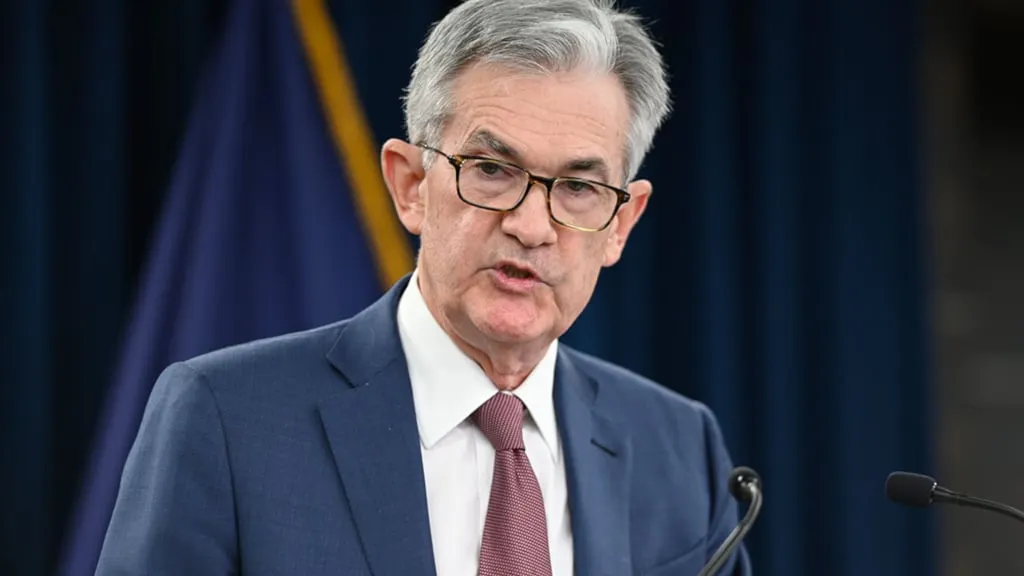The Federal Reserve lowered its benchmark interest rate by 50 basis points Wednesday, kicking off its long-anticipated easing cycle with a sizable first step.
The Federal Open Market Committee (FOMC) decided to lower the federal funds rate to a target range of 4.75% to 5.00%, marking its first rate cut in four years. Minutes before the decision, traders foresaw a 61% chance of a supersized cut, according to the CME Group.
Meanwhile, Bitcoin’s price has decreased 1.7% over the past day, falling to $60,000 as of this writing. The asset’s price dipped ahead of Wednesday’s rate-cut decision, along with Ethereum and Solana, which were down 2.6% to $2,300 and 3.1% to $129, respectively.
Bitcoin ultimately popped above the $61,000 price point soon after the Fed announcement, but has cooled to about $60,700 as of the latest update to this story.
“Inflation has made further progress toward the Committee’s 2 percent objective but remains somewhat elevated,” the FOMC said in a statement. “In light of the progress on inflation and the balance of risks, the Committee decided to lower the target range for the federal funds rate by 1/2 percentage point.”
During a press conference, Fed Chair Powell described Wednesday's cut as a "recalibration." Recent economic indicators have indicated the economy continues to grow, he said, but the "upside risks to inflation have diminished and the downside risks to employment have increased."
Alongside Wednesday’s reduction in rates, Fed officials published a “Summary of Economic Projections.” Within that release, a so-called dot plot indicated that policymakers believe the federal funds rate will settle close to around 4.5% by year’s end.
Projections released in June pointed to a less pronounced drop in rates by the end of 2024, showing a median forecast of around 5%. Additionally, officials foresaw the federal funds rate falling to around 4% by the end of 2025, and those projections were lowered to 3.25% as well.
Wednesday’s rate cut accentuated a shift in the Fed’s fight against inflation, which peaked at a four-decade high of 9.1% in 2022. As the pace of inflation has slowed in recent months—a readout last week showed inflation ran 2.5% in the 12 months through August—the Fed’s focus has moved toward supporting a cooling U.S. labor market.
“The time has come for policy to adjust,” Powell said a month ago, adding that the U.S. central bank does not “not seek or welcome further cooling in labor market conditions.”
The Fed’s decision Wednesday was marked by uncertainty. Following the inflation readout last week, expectations solidified around a 25-basis-point rate cut. Yet traders' expectations of a 50-basis-point rate cut strengthened following articles published in the Wall Street Journal and Financial Times that suggested Wednesday’s meeting would be a close call.
As markets recalibrated, spot Bitcoin ETFs saw inflows surge. The increase indicated that “Bitcoin is establishing itself as a go-to tool for investors looking to go risk-on,” Matt Hougan, the Chief Investment Officer of the asset manager Bitwise, said in a post on Twitter (aka X).
Powell recognized that Wednesday's cut was large, but said at the press conference that the move was far from a catch-up. Rather, Powell described the move as a "commitment not to get behind."
"We made a good strong start to this, and that's frankly a sign of our confidence in inflation coming down toward 2% on a sustainable basis," Powell said. "I'm very pleased that we did, [...] but I think we're going to go carefully, meeting-by-meeting."
What it means for Bitcoin
Analysts have said that the dollar’s strength will likely weaken as the Fed cuts rates, supporting the value of assets like gold and Bitcoin. Still, some are weary that the Fed will startle markets with a 50-basis-point rate cut if it leads to heightened fears of an economic slowdown.
CoinShares Head of Research James Butterfill told Decrypt in a written statement that Wednesday's rate-cut decision was a positive for Bitcoin. He said that lower borrowing costs should support the asset's price if monetary conditions continue loosening in the months ahead.
"The Fed have acted decisively and that is unusual from an historical perspective," he said. "But it is definitely the correct approach if they want to keep the U.S. economy on track."
Grayscale's Head of Research Zach Pandl told Decrypt in a written statement that the Fed's "willingness to take risks with inflation tends to drive investors to store-of-value assets, like gold in Bitcoin."
Pandl noted that the Fed decided to go with a jumbo-sized cut despite stating that "inflation remains somewhat elevated" in its FOMC statement.
Hashdex’s Chief Investment Officer Samir Kerbage told Decrypt in a written statement that risk assets like Bitcoin should benefit from looser monetary policy, overshadowing factors like geopolitical tension and election uncertainty in the coming months.
“Our long-term investment thesis for bitcoin remains intact and regardless of the near-term direction of monetary policy,” he said. “Markets should benefit from the formalization of the Fed’s dovish shift."
During the press conference, Powell took a moment to clarify that the U.S. central bank isn't celebrating inflation's defeat yet. While policymakers have made progress on the road to sustainable price increases, he said there's still more distance to travel.
"We're not saying mission accomplished or anything like that," Powell said. "But I have to say, though, we're encouraged by the progress that we have made."
Edited by Andrew Hayward
Editor's note: This story was updated after publication to include comments from Powell and analysts.

